Infantry targets: the American army again seeks answers
Task arrow with automatic weapons - provide support for the fire maneuver of the squad during the attack and create a key element of defense
The US Armed Forces once again renew projects aimed at improving the characteristics of the weapons of the infantry unit. In this regard, we estimate the current development and the reasons for the choice of weapons and ammunition.
Currently, infantry weapons are attracting more and more attention. In May, the 2017 of the Year, the Contracting Authority of the American Army, lodging in Arsenal Picatinny, issued two requests for information so that the industry would give its proposals for the new Interim Combat Service Rife, an intermediary combat rifle ICSR and the replacement of the automatic weapons for the M249 SAW (Squad Automatic Weapon). First of all, the focus is on longer range and penetration, as well as the capabilities of different calibers.
The desire to improve performance while reducing the load associated with the main weapon of separation is hardly new. Over the past decade, many projects have been launched to develop new weapons, including the Objective Individual Combat Weapon programs. Advanced Combat Rifle and Special Purpose Individual Weapon. In 2005, another HM8 program was closed, under which a branch line weapon was developed, including a sniper rifle, a carbine, an assault rifle, and SAW. Other projects focused on branch support weapon development. An example of this is the XM25 Counter Defilade Target Engagement System grenade launcher project, which was launched in the 2003 year and eventually closed in the 2017 year.
None of these projects has been brought to its logical conclusion. Continuing the 25-year-old tradition, the M16 / M4 rifles and the M249 SAW light machine gun are still the main weapon of the squad.
Determination of requirements
At first glance, it seems that the ICSR system is an attempt to find a quick-release response to concerns expressed about the reduction in the effectiveness of current weapons associated with the emergence of new advanced body armor. New ceramic plates (also known as ESAPI - an improved insert for protection against small arms) can withstand the hit of some standard rifle bullets. At the beginning of last year, General Milli, Chief of Staff of the American Army, was invited to discuss this problem at a meeting of the Senate Committee on the Armed Forces. Responding to questions from the senators, the general said that an ammunition was tested at Fort Benning that could solve this problem, while confirming that the cartridge could be adapted to different calibers. At the same meeting, he said that the army wants to have a new ICSR rifle chambered for 7,62 mm.
Some weapons experts agree that it is not only the current 5,56 mm cartridge that has problems penetrating these advanced protective plates. 7,62-mm standard cartridge M80А1 also not without flaws. In fact, they both need a new bullet with a tungsten core (perhaps the one that Millie was talking about). But the cartridges M993 and HM1158 ADVAP, which could meet these requirements, are still being developed. Under Millie's suggestion, a tungsten core capable of piercing the ESAPI plate can be implemented in 5,56 mm, 7,62 mm or other calibers.
Although the US army is not averse to getting a rifle chambered for 7,62 mm, it will only accept selected units to supply it. The US government is looking for funding sources that will arm the M4А1 carbine with all units of the army. Option А1 solves several problems at once. Some industry experts suggest that the ICSR system is also a response to army dissatisfaction with the fact that its infantry units were not able to withstand enemy machine guns and sniper rifles of 7.62xXNNUMX mm in Afghanistan.
A request for information on the ICSR rifle caliber 7.62x51 mm was published in late May. A joint ICSR industry discussion conference was held at Fort Benning in July, and an official request was issued in 10 days, with a response date scheduled for early September. Requirements for weapons determine that this should be a ready-made rifle weighing less than 5,5 kg with semi-automatic and automatic fire and a range of real fire of the order of 600 meters. The request for proposals defines a possible contract in the amount of up to 50 thousands of pieces, although the request for information referred to 10 thousands of rifles. The actual deployment plan has not yet been determined and, apparently, the actual quantity in the order still needs to be specified.
Even the selective deployment of a rifle presents a number of problems. For example, if an additional caliber is introduced for separation, the supply becomes more complicated. Plus the 210 ammunition round of 7,62 caliber cartridges is three times as heavy as the 5,56 caliber cartridges. In addition, fewer wearable ammunition will have a negative effect on the sustained fire in combat. Finally, there will be problems with combat training and the achievement of a necessary level of skill and professionalism by a soldier, especially with those new and additional weapons that have completely different characteristics, for example, a great recoil force.
Some experts note that the 7.62-mm caliber is already present in the infantry thanks to sniper rifles. The 600 rifle range of ICSR rifles implies that the shooter must have special skills. However, sources in the army claim that there is no particular need to make changes in the typical, historically established battle clash scenarios, which, as a rule, occur at a distance of 300-400 meters.
In this regard, the objectives of implementing the ICSR platform look somewhat vague. Colonel Jason Bonann of the Army Combat Training Center noted that at the moment there is no approved requirement specific to this particular rifle.
Taking the 5.56 ST as a basis, Textron developed and successfully demonstrated a light machine gun with tape feed that weighs less than the M249 SAW machine gun.
Competition Outlines
On the other hand, Bonann noted that sniper rifles are a direct and approved requirement of the Deputy Chief of the General Staff, Daniel Ellin. The goal is to provide a modern 7,62 caliber rifle with a mm skilled squad squad gunner (squad designated marksman) in each infantry unit. Besides the fact that standard combat sights should be installed on it, it will be inscribed in the sheet of weapons and equipment so that the squad can get a powerful optical sight for exact destruction of targets at a distance of 600 meters.
There are several variants of the SDM rifle. One of them is the CSASS (Compact SemiAutomatic Sniper System) compact semi-automatic sniper rifle, now known as the M110A1, for which the army awarded a $ 2016 million contract to Heckler & Koch (H&K) in March 44. Used by specialized sniper teams, the M110A1 (photo below) will have more advanced aiming optics and will also be equipped with a 1-6x scope for SDM missions.
At a briefing in May of 2017, the individual weapons program manager stated that the need for SDM is 6069 rifles in the 7,62 mm configuration, which must be deployed as an urgent requirement. Bonann stressed that these weapons should provide opportunities for both ranged and close combat, and she called them a critical and unique aspect of the requirements. Although the choice has not yet been made, there is a feeling that a suitable rifle may already be available.
Some observers compared the ICSR with a competitive assessment of an individual carbine, conducted in 2012 year. Seven companies took part in this assessment, each of them presented their own modern rifle. However, in June, the 2013 of the year, just before the military trials, the army officially canceled the competition. The reason was that none of the candidates showed sufficient improvements in comparison with М4А1.
In the subsequent report of the Chief Inspector of the Pentagon, it was noted that the army “inexpediently approved and approved the document on the requirements for an individual carbine program. As a result, the army spent about 14 millions of dollars on the competition to determine the source for the supply of new carbines, which was not necessary. ”
Applicants from this competition, as well as other applicants, may also participate in the ICSR competition. One of the alleged contenders is the 7,62mm NK417 rifle. The CSASS military system is based on the H&K G28 model, which in turn is based on the NK417 model. The NK416 rifle (a 417 mm version of the NK5,56) is in service with the Marine Corps under the designation M27.
Other candidates for the ICSR platform may include the FN Herstal SCAR-H rifle used by Special Operations Forces, the MR762A1 rifle from H&K, the LM308MWS rifle from Lewis Machine & Tool (deployed in the British army under the designation L129A1), the SIG Sauer SG 542 rifle and possibly an improved sniper the Enhanced Sniper Rifle rifle (modified М14, already put into service).
Companies do not comment on their participation in the ICSR competition, citing "the competitive nature of the project." However, the question remains of what is needed to fulfill the conditions of the ICSR project.
The M4A1 was finally standardized as the primary combat rifle of the US Army and Marines.
Next generation needs
From a tactical point of view, SAW is the backbone of a small unit and provides basic fire to support the separation maneuver. Perhaps the most legendary is the M1918 BAR (Browning Automatic Rifle) automatic rifle, developed by John Browning. It was the basis of the defense of the infantry squad, and during the attacking actions it provided fire for suppression. The weapon, which was a cross between a machine gun and a rifle, despite its considerable weight with a magazine for 20 ammunition, was notable for reliability. The M1918 BAR rifle was in service with the American and other armies until the 60s of the last century.
When the M1960 rifle was deployed in 14, its version of the 7,62 caliber mm was to replace the BAR, but these plans did not materialize. The M16 rifle, although capable of firing in automatic mode, was also unable to provide the continuous fire necessary for the separation tasks. As a result, the infantry units of the American army 24 of the year did not have the appropriate weapon class SAW.
Many foreign armies for their infantry offices adopted a light machine gun. In May 1980, after four years of testing, the United States chose the FN XM249 model as its SAW. This system, based on the proven 7,62-mm medium machine gun MAG58 (later received the designation М240), is intended "for special support of the infantry branch / fire group with high-precision fire." The light machine gun uses the same 5,56 cartridge mm, as the assault rifles, and it is powered either from the tape or from the store.
The accuracy of the weapon and the sustained rate of fire per minute of 85 shots per minute were well received in the army. However, there were problems with delays and, according to reports, the wear of these machine guns after 20 years of service was unacceptable.
In May 2017, the army issued a request for information indicating that it intended to find an automatic rifle for the next generation of NGSAR (Next-Generation Squad Automatic Rifle), which could be deployed in the “next decade”. According to the request, this replacement of SAW "will combine the fire power and the range of the machine gun with the accuracy and ergonomics of the carbine."
The requirement defines the maximum weight of 5,5 kg without ammunition and characteristics that will allow "to achieve superiority due to the defeat of stationary and suppression of moving threats at a distance to 600 meters (threshold value) and the suppression of all threats at a distance of 1200 meters (target value)." Some experts note that the use of the term “rifle” in the title suggests that the army prefers a different design, rather than a light machine gun.
The request for information specifies the cartridge for NGSAR, which should be at 20% easier. However, the deputy director of the Army Training Center, Volker, emphasized that “caliber and ammunition are not specifically mentioned in order to give the industry maximum freedom of action in providing the best balance of opportunities.”
For weapons of separation support, equally important is the long firing. In the request, it is defined as "at least 60 rds / min in 16 minutes 40 seconds (threshold) and preferably 108 rds / min in 9 minutes 20 seconds". This is equal to shooting 1000 cartridges without overheating the barrel. For comparison, the maximum sustained fire tempo for BAR is 60 rds / min and for M249 - 85 rds / min.
Cartridge update
The request for information also provides for "increased fire power." All together, these requirements are aimed at the possibility of a new caliber and ammunition. The Army continues to carry out a number of research projects to improve and develop new types of ammunition, for example, sleeveless, nested or telescopic, and polymer shells of various calibers, including 5,56 mm and 7,62 mm, which could be used in NGSAR and other weapons. Textron and Arsenal Picatinny have been particularly successful in reducing the weight of such ammunition in the development of the polymer cartridge cartridge. They managed to reduce the weight of the 5,56-mm cartridge on the 127 gran (8,23 grams), that is, on the 33% compared to brass sleeves.
The officers from the Training Center also raised the question of whether the polymer sleeve is a promising direction or whether it is better to look for a completely new and more advanced design. The second approach is stimulated by positive results in the development of telescopic cartridges (CT, cased-telescoped) with a polymer sleeve. CT-cartridge reduces the load on the soldier and at the same time allows you to carry more ammunition. However, the concept of CT also requires the development of new compatible weapons.
The concept of the ST originated in the LSAT (Lightweight Small Arms Technologies) program, currently known as CTS Telescoped Small Arms Systems. The LSAT program initially envisaged the creation of a lighter SAW and an individual carbine, including the parallel development of a new cartridge.
An industrial group led by AAI (currently part of Textron) worked in collaboration with SIC Armaments. She successfully demonstrated the 5,56-mm light machine gun, weighing no 4,2 kg ammunition. The LSAT program also provided for the creation of a CT-carbine, but work in this direction was postponed. Bonann noted that the needs for a new advanced carbine are determined by the army.
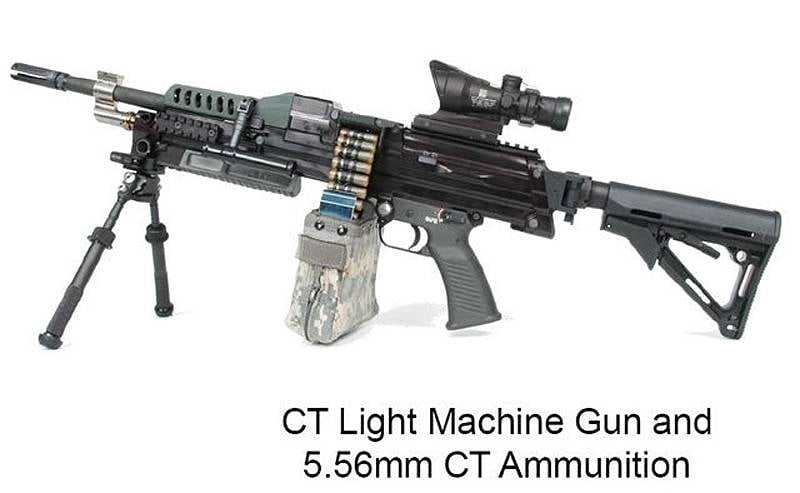
5,56-mm lightweight ST-machine gun from the company Textron
As a result of LSAT’s activities, Textron currently has an 5,56-mm lightweight ST machine gun. According to the company, “The light machine gun ST was shown to the Swedish armed forces at the Ground Operations Center. Compared with the current light machine guns on its 20% higher accuracy, stability when shooting, reduced recoil and the queue length limiter allowed to perform firing tasks with almost a third less ammunition. In addition, the soldiers were impressed by the ease of handling and ease of maintenance. ” The company noted that, with appropriate financial support, it could begin mass production of this platform by the year 2019.
Marine fires from M249 SAW during fire training at Camp Lidzhen
Closer look at the caliber
A request for information on replacing SAW and the Industry Day, held last summer, was the first step in a dialogue with industry. The process should go quickly if the army wants NGSAR to fall into the hands of soldiers during 10 years. From the point of view of accumulated experience, the process of acquiring weapons with even less technological problems than those described above often takes years before deployment, and this, moreover, that there is no need to organize an industrial base for new ammunition.
The possibilities of the new caliber inevitably initiate a debate about the "best" cartridge for infantry small arms. As a result, a discussion of the characteristics of a smaller 5,56-mm cartridge with greater speed and an 7,62-mm cartridge has not subsided since its appearance in the 1961 year. However, since 70, it has become standard not only for the US military, but also for most NATO countries, largely due to the advantages of a smaller lightweight and high-speed cartridge.
Other armies independently chose similar calibers, for example, for their new weapons Russia chose 5.56x39 mm, and China 5.8x42 mm. Soldiers can now carry more ammunition, while relatively low recoil allows for lighter weapons. Although the debate about the ideal caliber and optimal design does not subside, the military came to the general opinion that lighter weapons and ammunition give more advantages.
The adoption of the M16 rifle caliber 5,56 mm was a reflection of its compliance with the fighting at the near and middle distances, typical for Southeast Asia, and in general for temperate zones of the globe. The proliferation and adoption of the M16А1 as a standard rifle, and subsequently the M4, was at least partially determined by the never losing desire to reduce the burden on the soldier and simplify the supply process.
In addition, this process was determined by the results of a variety of in-depth battle analyzes, which invariably showed that the overwhelming majority of the fighting of small units occurs within 400 meters. The Deputy Director of the Training Center, Volker, noted that “the typical distance of the fighting of the squad remains at 400 meters. The main focus is on effective fire in the attack and defense in melee. " The unification of ammunition is very important from a tactical point of view and therefore became a decisive argument when making a decision in 1972 in favor of the 5,56 mm cartridge for the M249 SAW machine gun, and not the 6x45 mm cartridge.
Light machine gun M249 SAW
Ammunition Upgrades
Over the past 30 years, the US Army has spent considerable time and money on research and evaluation of promising solutions in the field of small arms and ammunition, such as a cartridgeless cartridge, telescopic cartridge, smart weapons and advanced combat rifles. Each of these decisions promised significant advantages, but at the same time it had unresolved technical problems, and therefore the weapons have not yet been adopted.
The technical reality at the moment lies in the fact that the provision of increased distances and penetrability is due to the additional mass and a corresponding reduction in the ammunition load. This was demonstrated through the CTSAS program, when the 5,56 mm chuck weight was successfully reduced to 127 gran, then the CT technology (telescopic cartridge) was applied to the 6,5 mm caliber cartridge, the weight of which almost doubled to 237 gran. As a result, the lightweight ST-machine gun with 800 mm 5,56 caliber cartridges began to weigh 9 kg, while the same weapon with 800 6,5 mm cartridges began to weigh twice as much, 18.2 kg, but at the same time it provided twice the long range.
The US Army is still studying its research on the configuration of small arms ammunition, begun in 2014 and completed in August, 2017. Volker explained that the report "is expected to give the army commander a clearer understanding of the options available and their advantages." However, as the results of the CTSAS program showed, the development of infantry infantry weapons is hampered by tactical-organizational rather than technical problems.
If it is important to preserve the unification of ammunition, defined by the term "universal cartridge", then in parallel it is necessary to develop individual and automatic weapons. On the other hand, one decision can be made on the development of the cartridge with its own set of options for an individual rifle, and the second on the development of a cartridge with a significantly longer range and penetrable power for an automatic weapon. Subsequently, two types of weapons could be proposed as a substitute for light and medium machine guns.
The determining factors in making decisions on weapons and ammunition are tactical considerations and methods of combat use. There are many alternative ammunition and calibers, including, for example, 6.0 SPC, 6.5 Grendel, .264 USA and 7x46 mm UIAC. each of which can meet specific needs. The choice comes down to answering the questions: What is the estimated distance of the battle? What is the role of each weapon in the squad? What is the acceptable trade-off between mass, performance and the number of wearable cartridges? The answers to them are unlikely to be limited by the technical characteristics of the weapons and ammunition of the same type.
There appears to be an informal consensus, the essence of which is that new ammunition will be used for the next weapon of the squad. A likely candidate here is the CT configuration, which is best prepared for production. This will require a weapon of new design and a corresponding increase in costs, which in the case of tight budgets can lead to a slowdown in the process and its transition into the next decade. According to the Special Operations Command, it could have switched to the 6.5 mm caliber already this year, although Bonann noted that a smaller number of personnel allows for greater flexibility in this matter.
Not surprisingly, many of the provisions regarding the size of the caliber, ammunition, typical combat distances, methods of warfare, tactics and the role of separation and the significance of each of these factors are being revised. This happened more than once, at one time the Springfield 1903 was replaced by an M1 Garand rifle, then adopted by the M14 rifle, then it was replaced by the M16, which was later pressed by the M4 automatic carbine.
Lessons learned from past small arms programs serve as a reminder of the need for a more thorough approach. However, a long process of development and procurement increases the risk of “perpetuating” the shortage of deployable systems. The reality is that one desirable characteristic is achieved by degrading another desired characteristic. Comparison of technical specifications of different weapons, the search for superiority without the context of military use, is a clear simplification. The task is to find a balance that reflects the combat missions, tactics and conditions of use, and then work out requirements for the characteristics of the system that will ensure this balance.
The final criterion remains: What is the most suitable weapon that will allow the unit to accomplish the fire mission and maneuver? What is the best combination of weapons that can maximize the effectiveness of an infantry unit? The US Army is again looking for answers to these questions.
On the materials of the sites:
www.nationaldefensemagazine.org
www.textron.com
www.fnherstal.com
www.army.mil
www.hqmc.marines.mil
pinterest.com
www.canstockphoto.com
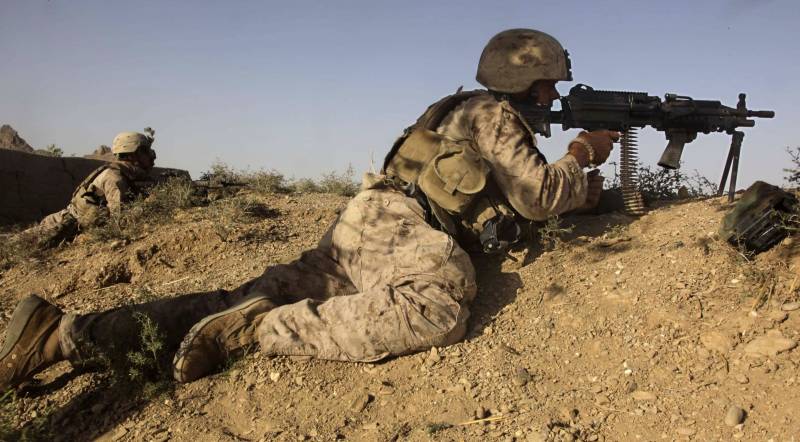
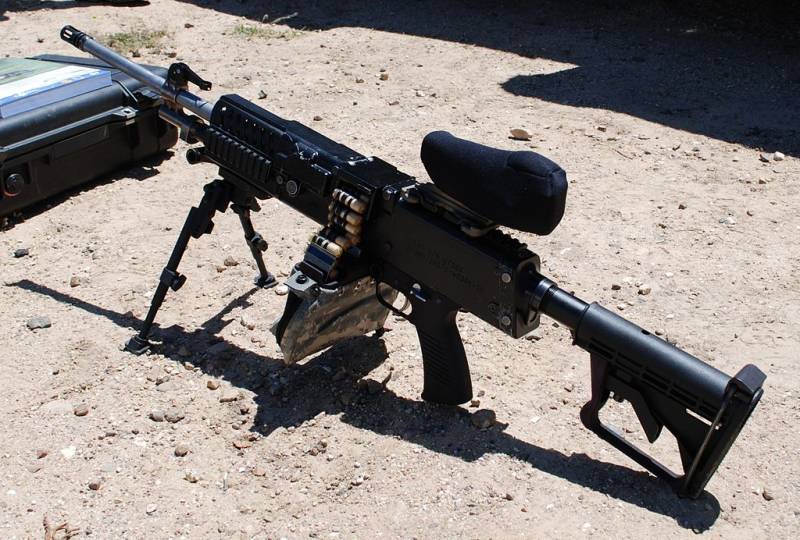
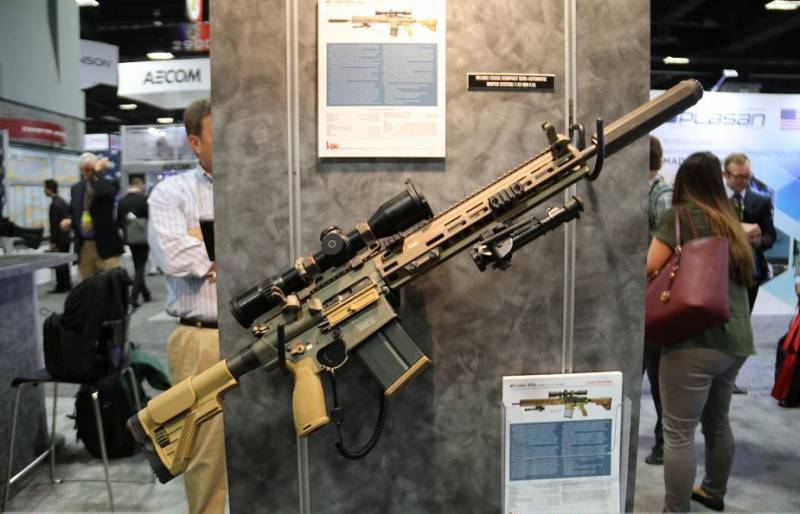
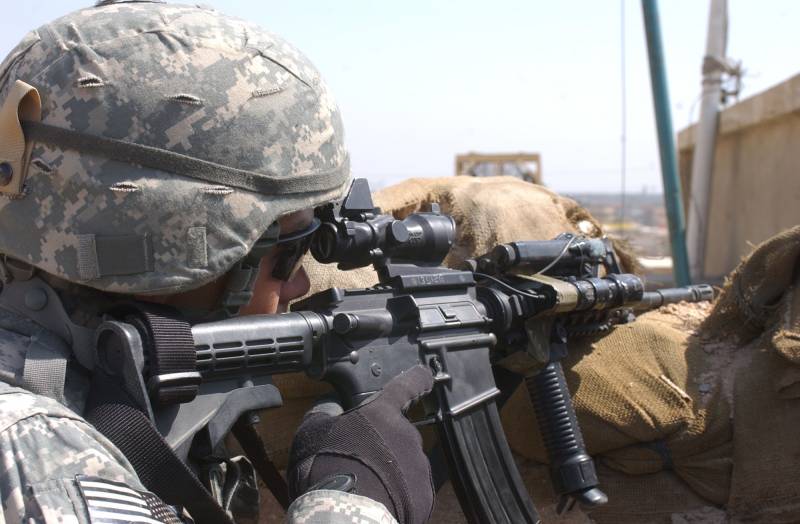
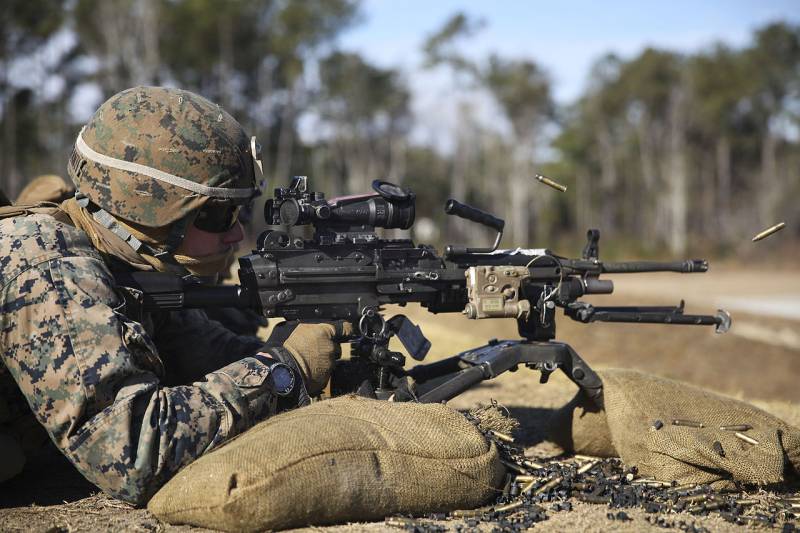
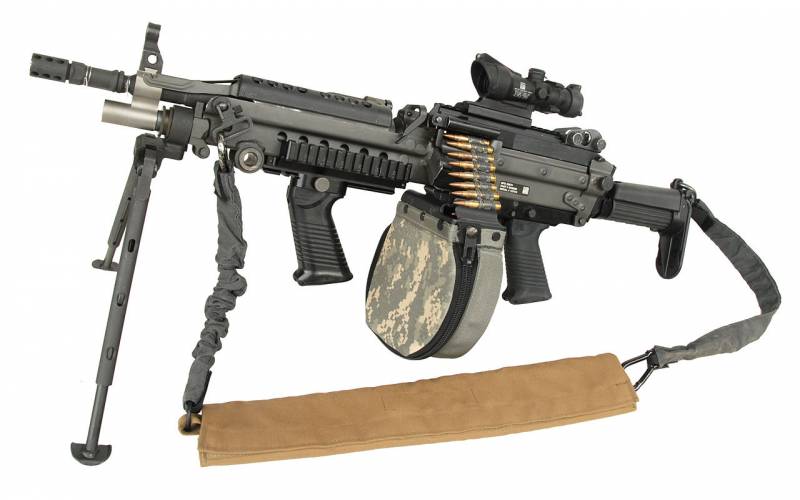
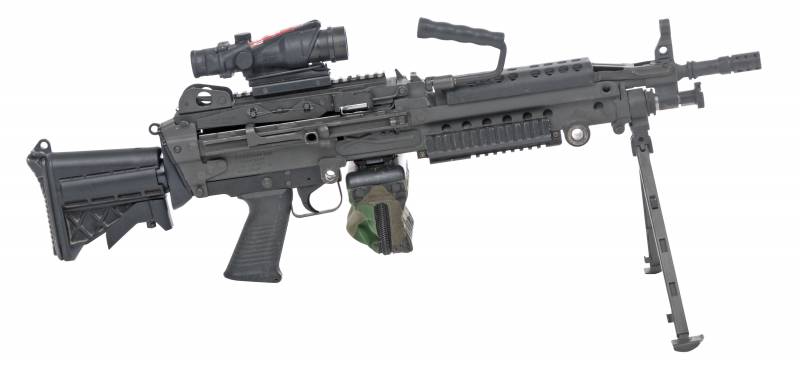
Information